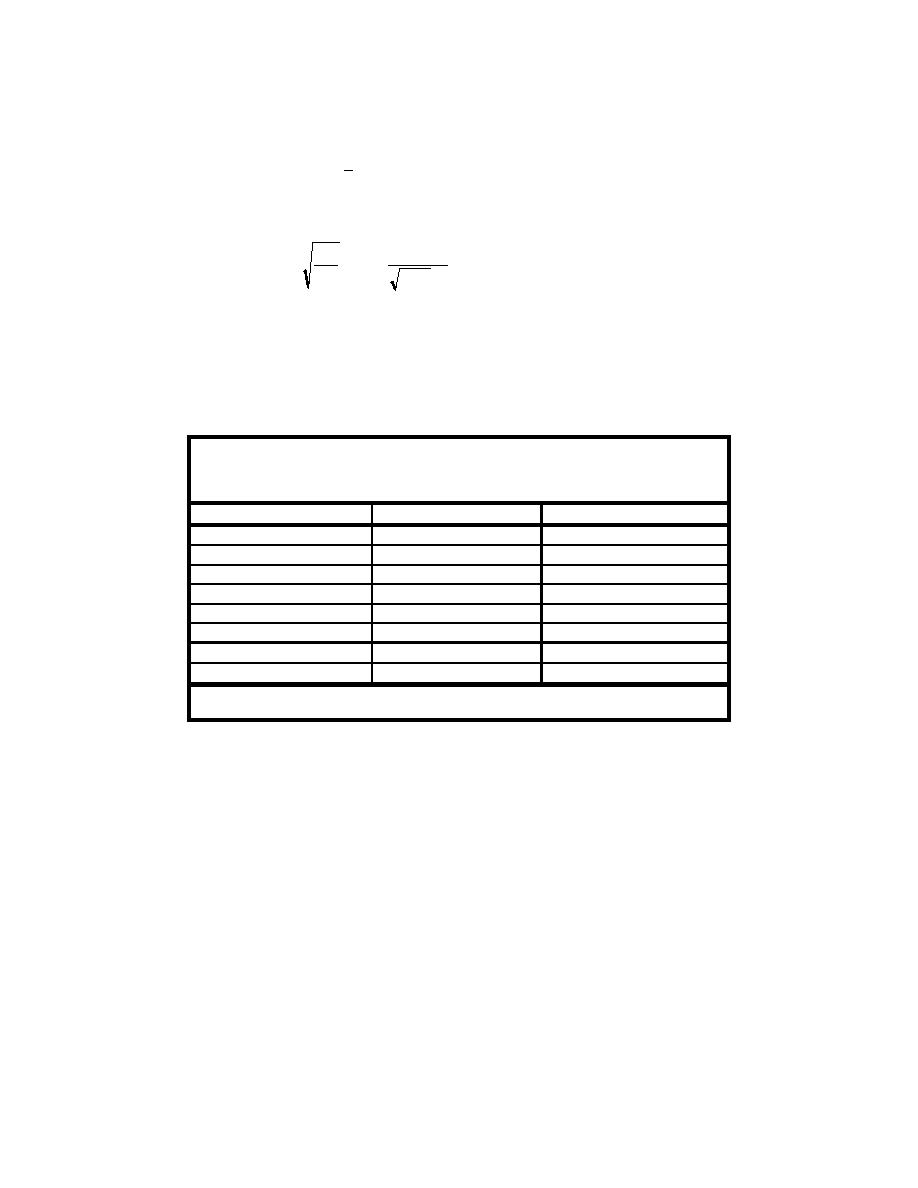
removed from the cross section. Other parameters relevant to the case of
submerged rubble-mound structures include the submergence, R, the crest width,
the toe of the structure, h toe . The Irribarren Number, defined according to Battjes
(1974) in its deepwater, ξ0, and inshore, ξh, forms as:
Ho
tan
, ξb =
ξ o = tan
(A1)
Lo
Η b / Lo
where tan α is the local bottom slope, and Ho and Lo are the deepwater wave
Representative values of the parameters used in analysis and evaluation of a
submerged structure at the end of the north jetty are listed in Table A1. Relevant
nomenclature is indicated in Figure A6.
Table A1
Representative Parameters for North Jetty, Grays Harbor
Environment
Parameter
Minimum
Maximum
ht (m)
-7 (mllw)
-12 (mhhw)
hc (m)
2.4
4.6
R (m)
-3 (mllw)
5.5 (mhhw)
B (m)
10
15
Hso (m)
1
10
Tp (sec)
8
25
tan α
0.015
0.035
ξ0
0.047
1.09
*H50 is the incident significant was height measured in deep water; Tp is the peak period of the
incident waves.
The analyses of Ahrens (1987, 1989) and van der Meer (1988) were
concerned with change in crest height in response to wave attack. Ahrens (1987,
1989) defined a number of dimensionless parameters that describe the behavior
of reef type structures (R > 0). The main parameter is the relative crest height
reduction factor (hc/ hc′) defined as the ratio of crest height at the end of the test
(hc) to the crest height at the beginning of the test, hc′. The two authors apply a
dimensionless stability number to describe the wave height relative to the stone
size:
A7
Appendix A
Stability Analysis of a Submerged Spur, North Jetty, Grays Harbor, WA



 Previous Page
Previous Page
